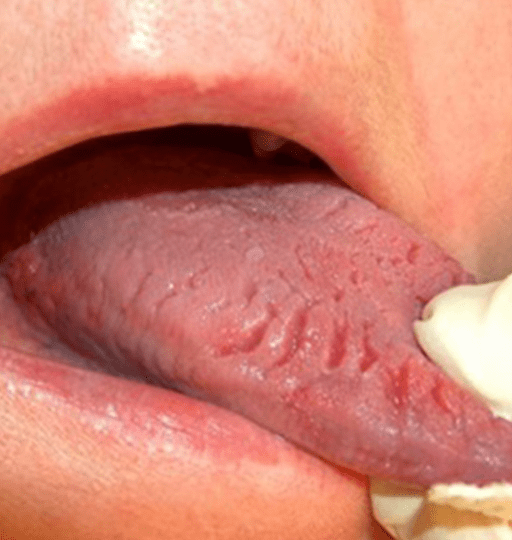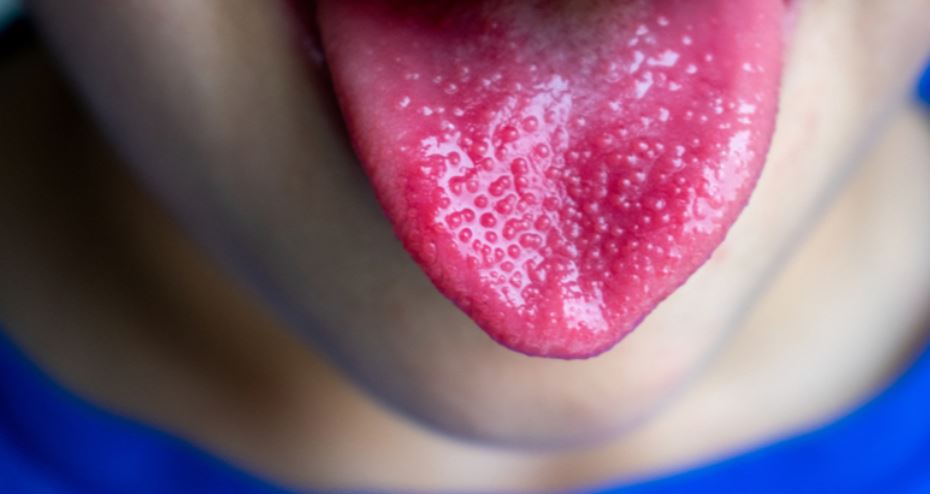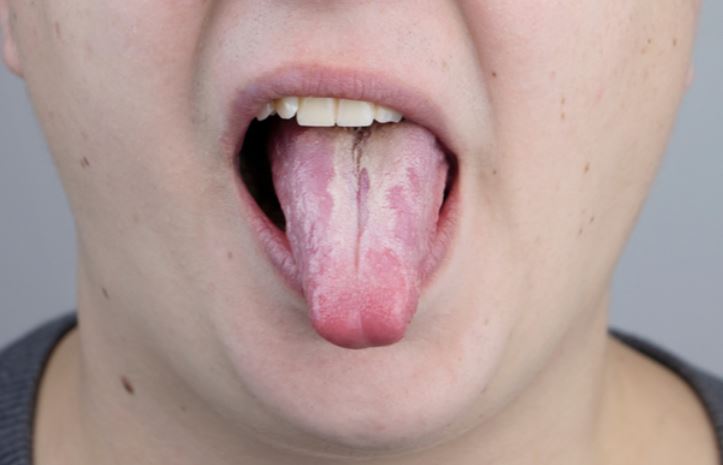When anything is off, your body will frequently give you quiet cues. The difficulty is that if you don’t know what to look out for, you can miss these warning signs until the issue worsens. Your tongue is where symptoms of an underlying medical problem may manifest. Even though you might not be aware of it, the condition of your tongue can reveal a lot about your overall health.

We don’t frequently consider the health of our tongues while discussing our physical well-being. However, alterations in how your tongue feels and looks could be a precursor to another health problem.
While some problems are relatively minor and simple to resolve, others might be more serious. You might want to call your doctor if you observe any of the following changes to your tongue.
Strawberry Tongue

This name refers to a tongue that is swollen and more bumpy than usual. The language will typically be red, though occasionally, it may appear white. It could resemble a strawberry or raspberry due to the surface’s bumps.
One of the following medical disorders could be indicated by a strawberry tongue.
Kawasaki illness. This illness results in the inflammation of specific arteries. Children are typically affected.
Yellow fever. A person who has strep throat may get a bacterial infection known as scarlet fever. Children between the ages of five and fifteen are especially susceptible to it.
A reaction to a medicine or food. An allergic reaction’s-induced inflammation may be the cause of a swollen tongue.
Syndrome of toxic shock. TSS is a rare side effect of nasal packing or tampon use. The bacterium Staphylococcus aureus typically brings it on. However, other germs can also be blamed.
A lack of vitamin B12. It may result in strawberry tongue if you do not get enough vitamin B12 in your diet.
Children with the Multisystem Inflammatory Syndrome (MIS-C). Children who have COVID-19 infection may develop this uncommon condition. There are reports that some kids may have this consequence, which can be severe and hazardous, even though most kids with COVID-19 have a moderate or asymptomatic sickness.
If you experience a strawberry tongue, you should consult a physician who can identify the underlying cause. Some of these, like a B12 deficiency, are simple to remedy. But some are much more serious than others, like toxic shock syndrome.
You should immediately seek emergency medical attention if you suspect you have toxic shock syndrome or are experiencing an intense allergic reaction.
Black Hairy Tongue
A black hairy tongue is a harmless ailment despite its potentially scary appearance. Usually, it is brief and harmless. The papillae, which are small projections on the tongue’s surface, are the source of the black, hairy appearance.
But these papillae are longer than usual. This implies they can readily capture items like cigarettes, food, yeast, and bacteria. This may slightly impair your sense of taste and contribute to poor breath.
The black hairy tongue may have a variety of causes or contributing factors, including:
Changes in the mouth’s usual bacterial or yeast composition following antibiotic use
Oral hygiene issues
(Xerostomia) Dry mouth
Use of mouthwashes with irritating oxidizing agents regularly, such as peroxide
Nicotine use
Excessive coffee or black tea consumption
Consuming alcohol too much
Consuming a bland diet that makes it difficult to remove dead skin cells from your tongue
You can generally find a solution by eliminating all potential causes and maintaining appropriate dental hygiene. Of course, if you are worried, especially if it persists after you’ve improved your oral hygiene, visit your doctor.
White Plaque on your Tongue

Your tongue’s papillae enlarge, causing this. The tongue might appear covered in white matter due to debris, germs, and dead cells trapped between the papillae. Inflammation or papillae hypertrophy are other names for the disorder. Any of the above causes may be the following:
Oral hygiene issues
Mouth ache
Dehydration
Using tobacco or smoking
Use of alcohol (excessive)
A diet low in roughage (consisting mainly of soft or mashed foods)
mechanical discomfort brought on by cutting tooth edges or dental devices
Fever
This can be an oral yeast infection or indicate a more serious condition. Visit a doctor if you notice a lot of white plaque on your tongue.
Geographic Tongue
This occurs when the tongue has smooth, white borders around reddish areas. This gives it a pattern resembling a map, hence the name.
There are no long-term health effects from geographic tongue. Most people do not experience symptoms, and it is not communicable. Some people may experience burning or tingling on their tongues, although in most cases, no treatment is required.
Geographic tongues are more prevalent in those with psoriasis Reiter’s Syndrome. It is also more prevalent among women who use hormonal contraception. A vitamin shortage, such as one in zinc, iron, folic acid, or vitamins B6 and B12, diabetes, allergies, or emotional stress, are possible additional causes.
Geographic tongue can appear and disappear and linger for days, weeks, or even years. Consult your doctor if you have any concerns.
Blisters
You should consult your doctor if blisters appear on your tongue and are not healing. They might indicate mouth cancer. An unusually pale or reddish skin patch in the mouth, growths, or lumps in the mouth are more signs of oral cancer.
Numbness in the face or neck issues, loose teeth swallowing or chewing, difficulties speaking
You should examine your tongue even if you don’t have any other symptoms. If it’s an early indication of cancer, your chances of beating it are better the earlier you receive a diagnosis.
Pay Attention to the Health of Your Tongue.
Numerous medical conditions can cause symptoms to appear on your tongue and in your mouth. Some might be minor and simple to cure, but others might be fatal.

